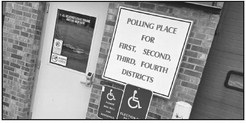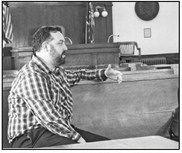Put student education first in state voucher program
The state of Wisconsin should look to YoungStar childcare rating system as a model to follow when working to expand the state’s private school voucher program.
Under YoungStar childcare facilities receive objective ratings in a variety of areas for an overall ranking of one to five stars. The ratings impact financial assistance and reimbursement levels given to the facilities. It rewards those that make a continued investment while serving as an incentive to get others to improve.
A major, valid criticism of the current school voucher program in Wisconsin is that private schools do not need to meet the same level of mandates and requirements as public schools. Beyond basic parameters, the state voucher program currently does not take into account the quality of education at private schools receiving voucher funding.
State educational leaders could work with representatives from the Wisconsin Religious and Independent School Association (WRISA) to establish criteria for rating levels, much along the lines of the accreditation process WRISA has in place.
Under such a system, schools that chose to meet higher standards would earn higher ratings and receive higher levels of funding. Those schools that did the bare minimum would receive lower levels of funding.
The ratings and the reasons for them publicly available would help parents in making educational choices as well as provide additional transparency and accountability for the investment of public funds.
Unless something drastically changes at the state level, Wisconsin residents can expect to see an expansion of the private school voucher program in the next biennial state budget. With this expansion must come increased accountability to ensure that students are receiving high quality educational opportunities.
Expansion of the voucher program has been a top item on the wish list for many Republican legislators for some time.
Advocates of vouchers say it gives greater parental choice and increases opportunities for students, especially those whose families may not otherwise be able to afford private school tuition. The time is ripe for an expansion of the voucher program, due to the massive state surplus and the very real need for expanded funding for public schools across the state.
Given Wisconsin’s long track record of investing in education at the K-12 level and the current political make-up of state government, the most likely outcome is to see a deal where more public funds go for vouchers in return for more funding to public schools in general. The amounts of expansion or increases will be decided in the horse-trading that goes along with any budget process, but the net result could be a win for everyone.
In order for this to happen, Wisconsin must make sure that taxpayers are getting the most bang for their voucher dollars and that students have high-quality teachers, facilities and educational resources to help ensure that every child can reach their full educational potential.
Wisconsin must put student education first as legislators work to expand the voucher program.




